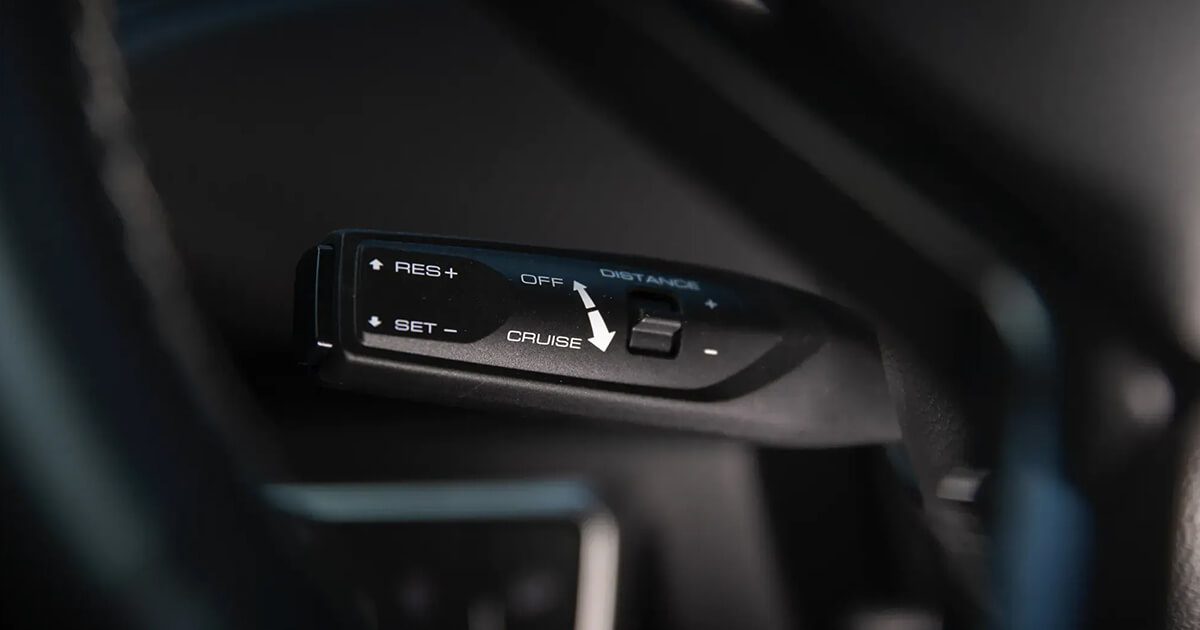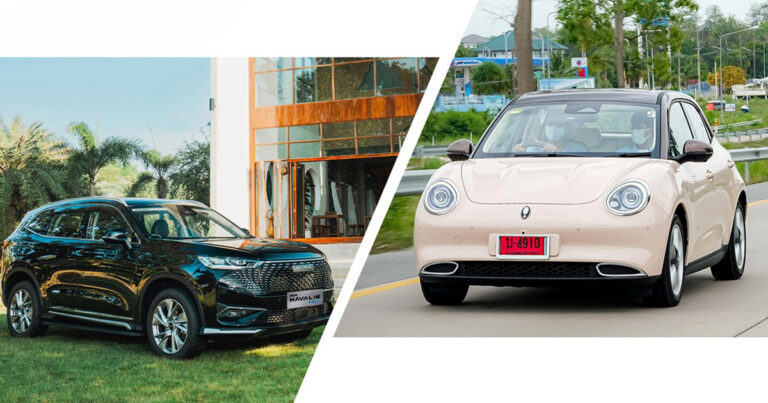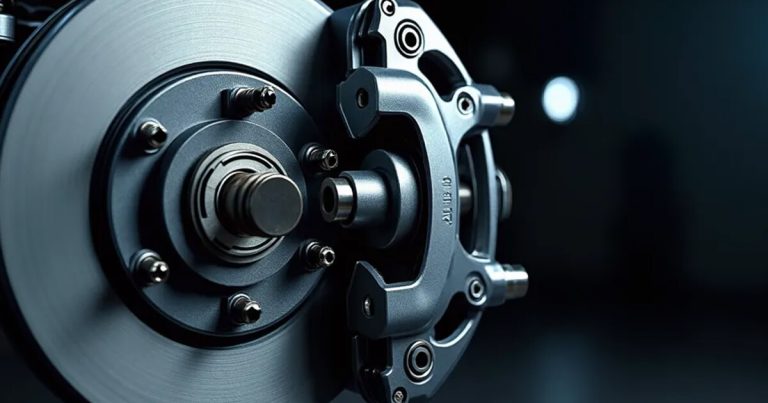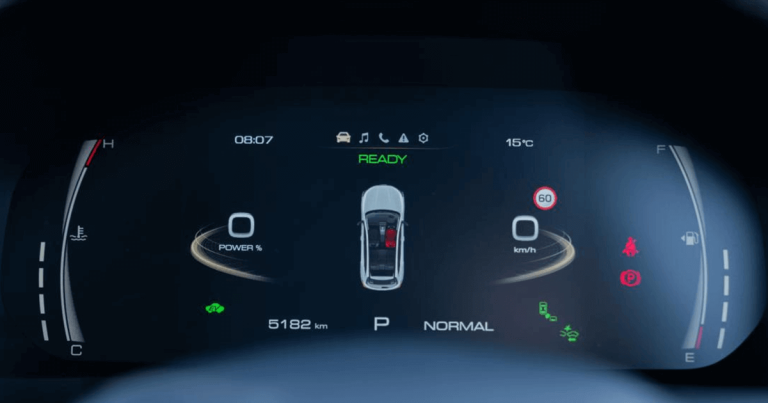Imagine being on the highway for a long drive. The scenery is indeed worth looking at. However, the constant need to adjust the car’s speed to maintain a steady pace is tiring. This is where cruise control comes into play.
Cruise control is a simple yet brilliant piece of technology that makes long-distance driving easy. It automatically controls the vehicle’s speed, allowing drivers to relax and take their foot off the accelerator. It helps reduce fatigue and works in maintaining a consistent & fuel-efficient speed.
Let us now dive into understanding the topic further. It will help us understand how it works to give people a smooth ride on the highway.
Briefly understanding Cruise Control
What is cruise control? It is a system in motor vehicles that helps drivers maintain a constant speed. The car’s driver sets the speed, allowing the system to take over the throttle control to free their foot from the accelerator pedal.
The system works by using sensors to monitor the vehicle’s speed. It also uses a managing module adjusting the engine’s throttle to maintain the following:
- Desired speed.
- Uphill acceleration.
- Downhill deceleration.
When trying to understand the cruise control meaning, it is a user-friendly system that helps car drivers set their desired speed limit. It helps them maintain it on long drives on highways and major roads.
Who invented its earliest form?
Visually impaired American inventor Ralph Teetor developed the first known cruise control in cars. He did it in 1948 for Chrysler. The system was marketed as Speed-O-Stat. This cruise control system used a combination of a vacuum pump to control the throttle and a physical governing mechanism. This system prevented the accelerator pedal from getting pushed further.
Different Kinds of Cruise Control
Cruise control has evolved with time and has produced three different varieties of itself. Let us now understand them briefly:
Traditional Cruise Control (Car Cruise Control)
In the basic version found in most cars, drivers manually set the speed using buttons or a lever. The system maintains that speed. However, it does not account for obstacles or traffic, as drivers must brake and accelerate manually.
Adaptive Cruise Control (Autonomous Cruise Control)
This is a more advanced version of cruise control. Apart from keeping a steady speed, it uses a radar and sensors to monitor the traffic ahead. In case the car in front slows down, the vehicle will automatically either slow down, keep a distance, or do both. Then it increases the speed again once the road ahead is clear.
Intelligent Cruise Control
The next level of cruise control. This one integrates GPS and traffic data to adjust speed as per the road’s conditions. If a car is approaching a curve or an exit, the system proactively reduces its speed to prevent it from entering the curve or exit at an excessive speed.
Intelligent Cruise Control is found in motor vehicles sold in the Gulf Cooperation Council (GCC) states. It was done as part of the advanced driver-assistance systems (ADAS).
Understanding the Modus Operandi of Cruise Control
Let us now understand how cruise control works:
Speed Setting
Activating the cruise control allows the system to take a snapshot of the car’s current speed. This speed becomes the target velocity that the car aims to maintain.
Monitoring the Speed
There is a sensor (or two) located either in the transmission or on the driveshaft. This constantly measures the car’s actual speed. The data is then fed to the cruise control’s electronic control unit (ECU) in real-time.
Throttle Adjustment
The ECU then compares the vehicle’s actual speed with the set target speed. Here are some things to note:
- If the car starts slowing down (especially when climbing a hill or a sloped terrain), the ECU opens the throttle slightly to increase power and bring the speed back up.
- If the car starts speeding up (like going downhill), the ECU closes the throttle to reduce power and slow the vehicle down.
Disengagement
Disengaging the system is for ensuring passenger safety when another car appears in front. It will disengage the cruise control the moment motorists press the brake pedal, the clutch (in case of manual transmission), or the cancel button. It allows them to regain complete control of their vehicle instantly.
Tips on using cruise control in motor vehicles
Understanding how to use cruise control helps us appreciate its intricacies and also helps in the proper usage of the system:
Starting Normal Drive
Bring the car to the desired speed so it can be maintained. It is best for driving on highways or open roads with negligible traffic.
Activate Cruise Control
The cruise control button is on the steering wheel. Alternatively, it is present in the form of a lever on the dashboard (near the indicator switch). Either press the button or switch the lever on.
Setting the Desired Speed
Once cruise control is active, pressing the set button or the lever helps fix the current speed. Now the vehicle will maintain this speed without the driver having to press the accelerator.
Adjusting the Speed if Needed
The ‘+’ and ‘-‘ buttons on the steering wheel can help reduce or raise the car’s speed.
Cancelling Cruise Control or Simply Turning It Off
There are two ways of doing so:
- Pressing the brake or clutch pedal to cancel cruise control.
- Pressing the Off button or toggling it off to completely disengage it.
Among the most essential safety tips for using cruise control: Do not use the system in heavy traffic, in rainy, foggy, or slippery conditions, and on inner-city roads. The system is designed for use on highways.
When to and when not to use cruise control?
| Best Time to use it | Best Time to avoid using it |
|---|---|
| Cruise control is best for use on major roads and highways. Unless car owners have its adaptive version, it is best deployed when roads are relatively empty and there is no need to slow down repeatedly for other traffic |
Cruise control should not be used in heavy traffic due to constantly changing speeds. It also should not be used on curved roads, inner-city roads & when approaching a steep bridge. |
| Cruise control works on longer journeys. It relieves drivers of the task of maintaining a steady speed. |
It should not be used in adverse weather conditions (heavy rain or ice). Modern cars will switch it off once such conditions are detected. Yet it can still raise the risk of accidents. |
| On late-night, long journeys, cruise control is not a good idea. It reduces the attention paid to driving and raises the chance of accidents when drivers fall asleep. |
Understanding the Pros and Cons of Cruise Control
| Pros | Cons |
|---|---|
| It helps maintain a set speed. It does not slow down for other traffic (adaptive cruise control does so). | Drivers become reliant on it and do not pay much attention to their driving. |
| Once activated, no motorist needs to worry about speed limits. | In case of slippery roads or adverse weather conditions, it raises the chance of the car sliding or skidding. |
| It reduces the driver’s workload | |
| It also helps save fuel on a long journey. |
Over to You
Cruise control is a feature many cars are equipped with today. Yet, car owners should understand when to use and not use it, recognize the differences between its various versions, and understand why using it at low speeds is detrimental. Cruise control is not a replacement for safe driving. It is a tool to help car owners maintain their car’s proper driving and speed.




